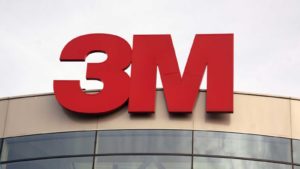Look for stocks offering the dynamic duo of increasing dividend payments and a rising stock price
Dividend investing has proved itself to be one of the best, most reliable strategies to amassing wealth. Because stocks beat out every other asset class over the long haul, and dividend-paying stocks outperform those that don’t make a payout, you will position yourself for generating riches by buying dividend growth stocks.
However, you shouldn’t just buy any dividend growth stocks. That are lots of income stocks that will cut or suspend their payout at the slightest sign of turmoil. On the other end are companies willing to go to the mat to defend their dividend. During the pandemic, Exxon Mobil (NYSE:XOM) was one of only a handful of oil and gas companies that maintained its payout and even grew the dividend.
Yet that’s not enough either. What investors want are dividend growth stocks. Those are companies that reward shareholders with both dividend increases and capital appreciation. Below are three dividend growth stocks you should buy today to create a portfolio of wealth to retire on.
Dividend Growth Stocks to Buy: Agree Realty (ADC)
The first dividend growth stock to buy now is real estate investment trust (REIT) Agree Realty (NYSE:ADC). It is arguably one of the best REITs on the market to reward you today and tomorrow.
Publicly traded since 1994, Agree Realty ia a consistent, well-balanced REIT that has generated 11.8% compound annual total returns for investors. It also enjoyed 6.1% compound annualized dividend growth during that time.
Agree has such a strong track record because its adjusted funds from operations (AFFO) per share has grown at an annual rate of 7%. That’s better than many of its peers, including Realty Income (NYSE:O), which has grown AFFO per share by 5% annually. AFFO is a key metric for REITs, much like free cash flow is for other companies.
Agree Realty is also well diversified with its top three sectors accounting for only 27% of the total portfolio. It focuses on tire and auto centers, home improvement and grocery. Its top tenants are Walmart (NYSE:WMT), Tractor Supply (NYSE:TSCO) and Dollar General (NYSE:DG). Yet no one sector accounts for more than 10% of the total. Again, Agree Realty stock is well diversified protecting its downside.
High interest rate environments such as we’re in weigh heavily on REITs. That explains why ADC stock is down 10% year to date but that just makes it a great price to buy this tremendous dividend growth stock.
Lowe’s (LOW)
Home improvement center Lowe’s (NYSE:LOW) is the second dividend growth stock to consider for your portfolio. It has far outperformed the S&P 500 over the past decade, offering investors total returns of 514%, or double the broad market index’s 235% returns.
Lowe’s has steadily increased the amount of its dividend every year. Back in 2014, it was paying a quarterly dividend of just 18 cents per share but today the payout is worth $1.10 per share, a six-fold increase. At the same time, the share price quintupled. That’s a powerful combination for your portfolio.
The retailer is, in fact, a Dividend King, or a company that has raised its dividend for 50 years or more. Yet as noted earlier, it’s not enough to increase it. You also want the payout well supported, which Lowe’s offers too. While the dividend has grown at an 18% compound annual growth rate (CAGR) over the last 10 years, Lowe’s free cash flow (FCF) has expanded by more than 6% annually. That’s actually quite good for a mature business like the home improvement center. FCF per share grew smartly over that time as well, a strong indication Lowe’s stock and dividend will continue rising in the future.
Domino’s (DPZ)
The last dividend growth stock to buy may seem surprising but pizza shop Domino’s (NYSE:DPZ) has been a monster stock to own. Over the past decade, it has served up total returns of over 630% in large part because it has been growing its dividend at a CAGR of 20% a year. Its quarterly dividend has grown from 25 cents per share to $1.51 per share today. It yields 1.2% annually.
Investors might initially be put off by that but if you consider its yield on cost, or the amount the dividend yields based on when you purchased it, Domino’s is a fantastic wealth generator. A $1,000 investment 10 years ago nabbing that 1.2% would be seeing 8.1% yields today. Furthermore you wouldn’t have even had to reinvest dividends to achieve that. That’s the power dividend growth stocks deliver.
Domino’s trades at a premium today because it nailed down just how to grow its business. It floods an area with stores in a strategy called “fortressing” that builds brand awareness with consumers while reducing costs such as marketing. Although an individual store may do less business, the company itself prospers.
With free cash flow growing 12% annually, the payout is well-supported. And because the FCF payout ratio is just 35%, there are many more years of dividend growth and capital appreciation to come.
On the date of publication, Rich Duprey held a LONG position in XOM, O and LOW stock. The opinions expressed in this article are those of the writer, subject to the InvestorPlace.com Publishing Guidelines.

















